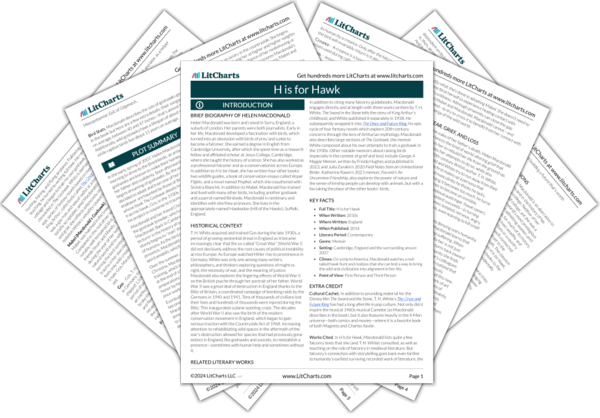Mabel’s joyful discovery of her hunting skill lightens the heavy mood of this chapter and reminds readers of why, in Macdonald’s view, the wild world is worth mourning and preserving. There is a beauty in the rightness to which Mabel is suited to the task of hunting, and a simplicity to her life which Macdonald envies. Unlike her human, Mabel knows what she’s for. She doesn’t suffer grief or loss—she simply does what nature intended for her to do.
